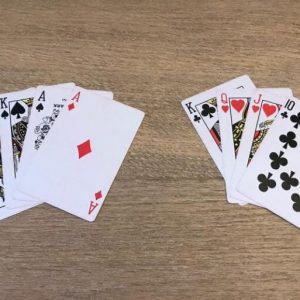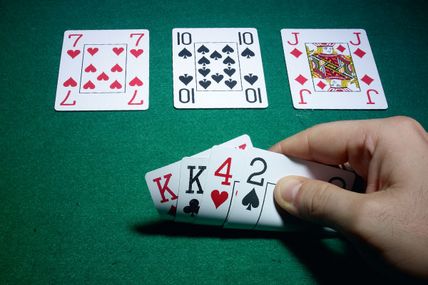8 Game Strategy Part VIII – Pot Limit Omaha

We have come to the end of our series on 8-Game strategy. This week, we go over Pot-Limit Omaha. PLO is one of two big-bet games added to HORSE to bring in the NL Hold’em crowd. The PLO round is one of two rounds where you will see shorter stacks try and double up or go home.
Today, we will give you some basic tips for surviving the PLO round. Keep in mind that you will be playing larger pots on average in this round than in any other round in 8-Game, including NL Hold’em.
Pick Stronger Starting Hands
While Omaha is a game where you will play many more hands than Texas Hold’em, it is still a game of big cards and big draws. As such, you want starting hands that give you the best chance to make the nuts.
You want four cards that are well-coordinated and that give you a chance to make nut straights and flushes. Hands like AAKQ, AKQJ, KQJ10, AAKK double suited, or even hands like QJ109 are all hands you’re looking for.
Stay away from junk hands, or lower-ranking hands. This isn’t Omaha Hi-Lo, so most baby hands are not going to be playable.
Draw to the Nuts or Get Out
Remember, big cards and big draws. That means you need to be drawing to the nuts whenever you’re on a draw in this game. Drawing to second or third nuts is going to be a recipe for disaster long-term. Sure, there are times where the second nuts are going to win, but generally, you’re going to run into the nuts more often than not.
Constantly Evaluate the Board
A big mistake that beginners make in PL Omaha is that they fail to evaluate the board after each round. Just because you flop the nut straight, that doesn’t mean that you’re going to win the hand. Evaluate the board to see if there are any other potential draws.

Check to see if your nut straight is vulnerable to a nut flush draw. Also, be careful when the board pairs as there is a good chance someone is going to wake up with a full house.
This evaluation process should happen after every street in PLO. You may have the nuts on the flop, but what about after the turn. If the board is rainbow on the turn, your nut flush is good, but that doesn’t mean you’re good if the river pairs the board.
Constantly evaluate the board to ensure your hand is best. Otherwise, you risk donating to other players.
Bluff Less Overall
While there are times where a well-timed bluff may win you a pot, PLO doesn’t allow for as many bluff opportunities as other forms of poker. That’s because it is usually correct to play a draw, even to an all-in bet, because of the general odds.
Definitely stay away from bluffs in multi-way pots where your hand could be vulnerable or susceptible to being outdrawn. In these spots, you’re only going to push out the tightest of players.
Bet Your Big Hands Aggressively
Don’t fall into a trap of slow playing your hands when you’re well ahead or have the nuts. If you flop the nut straight, bet aggressively to make others pay to draw out to you. Slow playing the nut flush on the flop could allow someone to see the turn cheaply and pick up a better draw. The board could also pair, meaning you no longer have the nuts.
Also, when it is clear you cannot be beaten, try to pump the pot. Bad players will often chase down second-best hands (even though we say not to) and you’ll win a nice pot.
This concludes our series on 8-Game strategy. With the tips in this series, we hope to help you win more often in mixed game tournaments or cash games.
